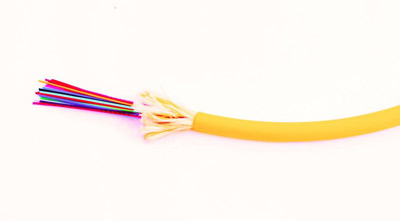Fiber Optic Cable Codes
Bare fiber within buffer tubes, as well as 900um tight buffered fiber, are color coded to differentiate the fibers within the cable (see chart below). This color coding enables installers to easily identify cables at both ends of the fiber link, and also indicates the appro-priate position of each fiber on a patch panel. In contrast, jacketed fiber is color coded differently.
When a specific color is assigned to the fiber cable, this allows the technician to install the cable in an efficient manner. It helps avoid confusion and further problems due to improper connections. Cable jacket colors make it faster and simpler to pinpoint which type of fiber is inside the cable you are dealing with.
Fiber optic color codes are determined and set forth by the EIA/TIA-598 standards guide identification for fiber and fiber related units. This standard determines the color codes that are to be used in which applications. Optical fiber cable is separated into strands, which are the individual fibers within the larger piece of cabling. A maximum of 24 individual strands can be manufactured loosely, and after that they are placed into tubes containing 12 each. These tubes with 12 strands is then color coded.
1. Blue
2. Orange
3. Green
4. Brown
5. Gray
6. White
7. Red
8. Black
9. Yellow
10. Purple
11. Rose
12. Aqua



